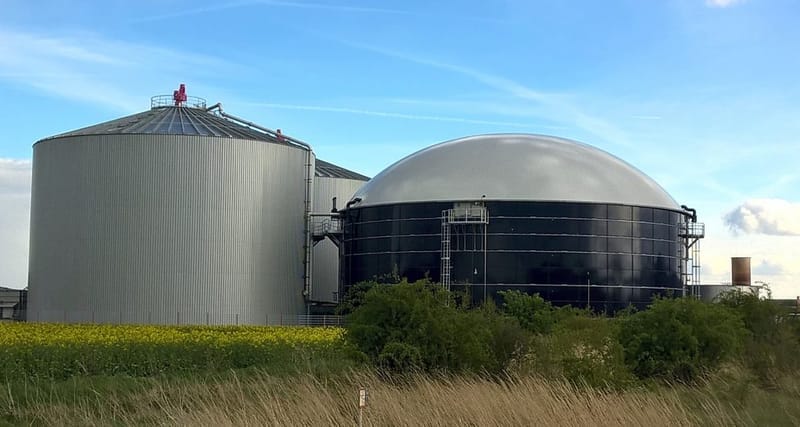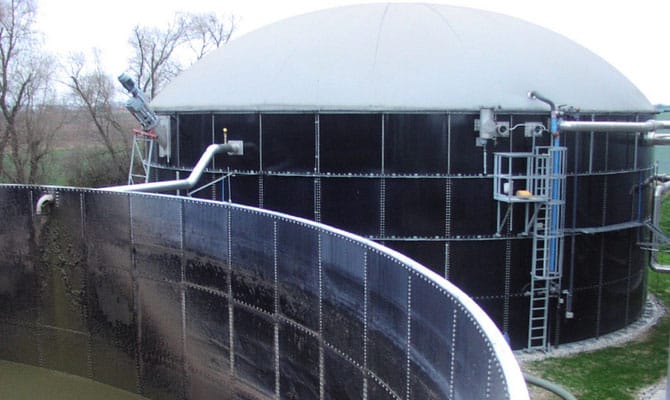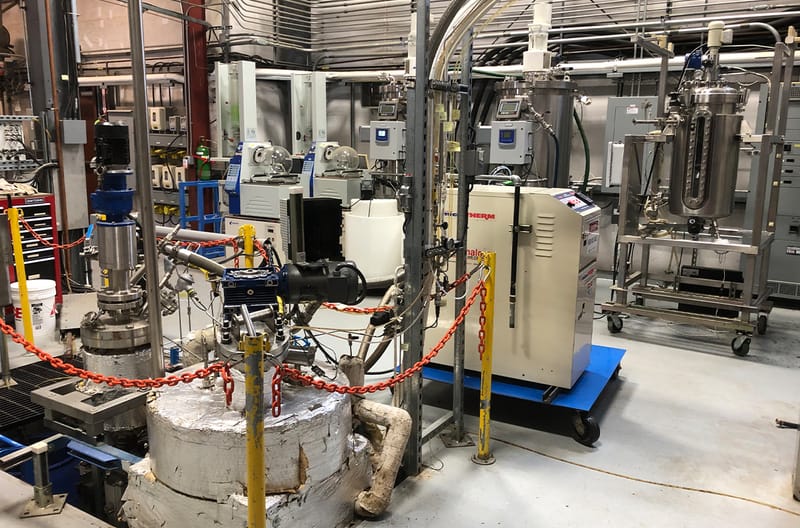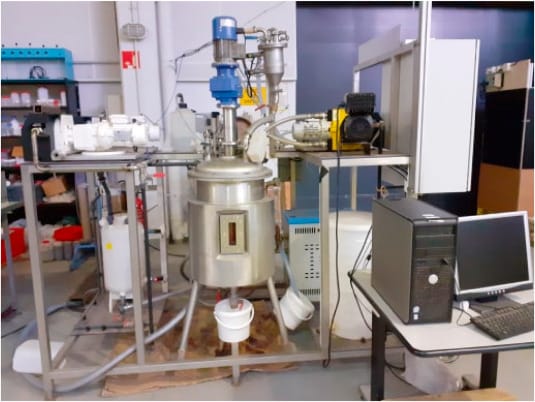The Potential of Biogas: A Journey Through Innovation and Sustainability
In the quest for sustainable energy solutions, biogas emerges as a beacon of hope, harnessing the power of organic waste to fuel our future. From wastewater sludge to food scraps, this renewable energy source offers a myriad of possibilities, promising to revolutionize our approach to waste management and energy generation. Join us on a journey through the intricate world of biogas, where innovation meets sustainability, and together, we'll explore the untapped potential of this remarkable resource.

The Potential of Biogas
Biogas, originating from the anaerobic decomposition of organic substances likesewage sludge, livestock waste, and food leftovers, represents a leading renewable energy option. Its predominantly methane and carbon dioxide content, combined with its capacity to derive from diverse sources, renders it a flexible and environmentally friendly energy source. As we delve further into the realm of biogas, we'll trace its transformation from waste to energy and examine the multitude of factors influencing its production and utilization.
Understanding the Mechanism of Biogas Production
The process of anaerobic digestion, which produces methane-rich biogas by breaking down organic materials in the absence of oxygen, is essential to the production of biogas. A variety of microbial communities orchestrate the several phases of this complex process, which include hydrolysis, acidogenesis, acetogenesis, and methanogenesis. Optimizing the stability and efficiency of biogas production requires an understanding of the subtleties of these phases as well as the variables affecting microbial behavior.

Exploring the Quest for Enhanced Biogas Yields: Challenges and Prospects
Biogas, heralded as a source of renewable energy, harbors significant potential. However, tapping into this potential necessitates navigating a landscape marked by challenges and opportunities. The composition of feedstock, fluctuations in temperature, pH variations, and retention time all exert influence over the effectiveness and quality of biogas generation. While these factors present hurdles to achieving optimal yields, they concurrently offer avenues for innovation and advancement in the field.
Co-digestion, the simultaneous digestion of multiple feedstocks, offers a promising avenue for optimization, allowing for the synergistic utilization of diverse organic materials. Additionally, pretreatment techniques such as mechanical, chemical, or biological methods hold significant potential for enhancing biogas production efficiency by facilitating more rapid and complete degradation during anaerobic digestion. By addressing these challenges and leveraging innovative approaches, we can unlock the full potential of biogas as a renewable energy source.

Beyond Energy: Biogas Valorization and Circular Economy Integration
Biogas production extends beyond energy generation, offering opportunities for resource recovery and circular economy integration. By valorizing wastewater sludge and other organic wastes through anaerobic digestion, we not only generate renewable energy but also recover valuable nutrients and organic matter. Co-digestion with diverse feedstocks and integration with other waste-to-value processes, such as hydrothermal carbonization and bioelectrochemical systems, further enhance the sustainability and resilience of biogas production systems.
Innovation at the Microbial Level: Bioaugmentation and Microbial Engineering
Microbial consortia play a pivotal role in biogas production, driving the anaerobic digestion process and influencing biogas yields. Recent advances in bioaugmentation and microbial engineering offer novel approaches to enhance microbial activity and substrate degradation rates. By introducing specialised microbial strains or genetically engineering microbial communities, researchers can optimise biogas production and resilience to fluctuating operating conditions, uncapping new frontiers in biogas technology.
Smart Solutions for Sustainable Biogas Production
In today's era of digitalization and automation, smart monitoring and control systems are revolutionizing biogas production. By leveraging real-time data analytics, advanced sensor technologies, and predictive modeling algorithms, operators can fine-tune process parameters, detect anomalies, and ensure the seamless operation of anaerobic digesters. This integration of smart solutions not only enhances operational efficiency but also elevates reliability and environmental performance, paving the way for a more sustainable future.
These smart solutions offer unprecedented insights into the biogas production process, empowering operators to make informed decisions in real-time. By continuously monitoring key indicators such as temperature, pH levels, gas composition, and digester performance, operators can proactively identify potential issues and implement corrective measures, minimizing downtime and maximizing biogas yields. Additionally, predictive analytics enable operators to anticipate future trends and optimize process parameters for enhanced performance and resource utilization.
Furthermore, biogas production facilities can be remotely operated and managed thanks to intelligent monitoring and control systems, which decrease the need for manual intervention and increase operational flexibility. Because of its remote accessibility, operators may streamline operations and boost overall efficiency by monitoring and controlling the biogas production processes from any location. In conclusion, creative ideas have a great deal of potential to improve the sustainability and effectiveness of the biogas generation process. By harnessing the power of real-time data data analysis, sensor technologies, and modeling techniques, operators may maximize efficiency, enhance accuracy, and minimize adverse environmental effects, driving the future of sustainable biogas production forward.
A Circular Biogas Economy: Policy and Regulatory Aspects to Take into Account
To encourage innovation and investment in the shift to a circular biogas economy, regulatory incentives and supportive policy frameworks are needed. Governments and regulatory agencies are essential in encouraging the development of biogas; they do this by offering financial rewards, feed-in tariffs, and renewable energy credits to encourage the production of renewable energy. Furthermore, waste management plans and environmental laws influence the biogas production industry, making sure that social and environmental factors are given top priority.

Charting the Path Forward: Collaborative Solutions for a Sustainable Future
As we embark on the journey to unlock the full potential of biogas, collaboration and knowledge exchange emerge as fundamental pillars of success. Cross-sectoral partnerships between industry, academia, government, and civil society foster innovation, drive technological advancements, and accelerate the adoption of sustainable biogas solutions.
By pooling resources, expertise, and perspectives, stakeholders can collectively address challenges, identify opportunities, and develop holistic approaches to biogas production and utilization. Together, we can chart a path forward towards a more resilient, equitable, and environmentally sustainable future powered by biogas. Through collaboration and shared commitment, we can harness the transformative potential of biogas to address pressing energy, environmental, and socioeconomic challenges, creating lasting benefits for communities and ecosystems alike.
Embracing the Power of Biogas
In closing, biogas represents a beacon of hope in our quest for sustainable energy solutions. From wastewater sludge to food waste, the potential for biogas production is vast and untapped. By embracing innovation, collaboration, and sustainability principles, we can harness the power of biogas to transform waste into wealth, mitigate climate change, and build a more sustainable future for generations to come. Join us in inculcating and adopting the power of biogas and uncapping its full potential for a brighter tomorrow.